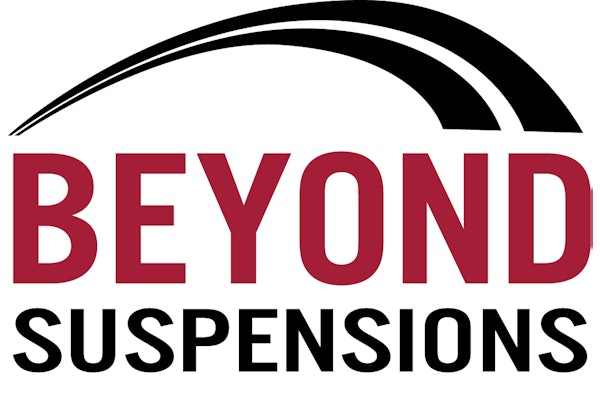Torque Wrench Use and Maintenance
A torque wrench is a precision instrument designed to apply a specific amount of force to a fastener, according to Snap-on Tools. Proper care of the torque wrench is very important.
Guidelines typically are provided noting acceptable torque ranges, the order in which specific fasteners are tightened and the number of times a fastener must be tightened and loosened to ensure uniform torque application. Failure to properly torque fasteners can lead to equipment damage or personal injury.
Snap-on recommends following these maintenance and use practices:
1. Wear safety glasses or goggles at all times when using any hand tool.
2. Always follow the manufacturer’s directions regarding torque direction, proper force, torque pattern/sequence, use of lubrication on fasteners and torque “tighten/release” cycles.
3. Do not exceed the recommended working range of the torque wrench. Reliable measurements are based on a percentage of the working range. In general, most mechanical wrenches have a useable range from 20 percent to 100 percent of full scale. Most electronic wrenches have a useable range from 10 percent to 100 percent of full scale.
4. Do not use accessories or handle extensions unless specifically allowed by the torque wrench manufacturer.
5. Take time to inspect the wrench and check for worn or cracked sockets. Properly lubricate and replace worn parts.
6. Avoid dropping or sliding a torque wrench. Dropping a torque wrench on a hard surface can cause it to lose reliable calibration. If you suspect that a wrench has been dropped, have the tool inspected by the manufacturer or reputable calibration service.
7. Always store a torque wrench in a protective case or location when not in use.
8. Avoid exposure to temperature extremes, high humidity, fluid immersion and corrosive environments.
9. If using a click-type torque wrench, always store it at the lowest level on the scale.
10. Avoid marking, etching or placing labels on torque wrenches.
11. Use a torque wrench to apply a specific torque value during the final assembly process. Do not use a torque wrench as the primary means of tightening or loosening fasteners.
12. As most torque wrenches are length specific, always grasp the torque wrench in the center of the handle. If you need to use two hands, place one hand on top of the other.
13. Apply torque in a slow, methodical manner and avoid sudden, “jerking” movements.
14. When the wrench signals (by clicking, beeping or lights) that a specific torque has been reached, stop pulling immediately.
15. After 5000 cycles or up to one year of use, whichever comes first, have your torque wrench inspected and recalibrated by the manufacturer or reputable calibration service.
With proper care, a high-quality torque wrench should provide accurate measurements for many years.
Revised Fan Ring Bracket Mounting Screws
A longer mounting screw (Part No. 945444) for the left-side fan ring mounting bracket was implemented into production on all Mack CXU, CHU and GU model chassis equipped with MP7 or MP8 engines, replacing the previous screw (Part No. 64AM12), as shown in Figure 1.
For GU models, the change took effect June 24, 2008, and for CXU and CHU models it was July 8, 2008.
The revised screw is 25 mm long, 5 mm longer than the previous screw. If you find that the left-side fan ring bracket mounting screws are broken on a CXU, CHU or GU model chassis manufactured prior to the above mentioned dates, you need to replace the screw.
Safety Recalls
The National Highway Traffic Safety Administration (NHTSA) has issued the following recalls:
- On 103 2005 to 2008 model year Motor Coach Industries D4500 and D4505 coaches equipped with Detroit Diesel Series 60 engines and ZF transmissions, customers may experience interference between the drive shaft U-joint bearing cap bolts and the tag axle center beam assembly. This could cause the bearing cap bolts to shear, freeing the bearing and possibly releasing the drive shaft, increasing the risk of vehicle damage or a crash. A tag axle suspension spacer kit and SPL250 drive shaft retrofit kit need to be installed to limit the suspension travel and reduce the swing diameter of the drive shaft, thereby increasing the clearance and eliminating interference.
- The propeller shaft on 2,836 2008 to 2009 model year Isuzu NPR/NQR and NRR, GMC W3500, 4500 and 5500 and Chevrolet W2500, 4500 and 5500 trucks was manufactured with insufficient high frequency heat treatment. As a result, the affected portion of the propeller shaft may not maintain its durability throughout the expected useful life of the vehicle. The propeller shaft could break off while the vehicle is being driven, which could result in the vehicle stalling and coasting to a stop or loss of vehicle control.
- Twenty-three 2009 model year Tiffin Allegro buses equipped with ArvinMeritor axle assemblies are being recalled. The wheel-end studs may have been improperly tempered rendering them brittle and susceptible to fracture. If one wheel stud fractures, the remaining wheel studs are required to carry more load. If left in this condition, the remaining wheel studs may also fracture even if they are manufactured properly. Fractured wheel studs could result in a crash.
- Feature Code 0048PMS or 0548001 heater units and Feature Code 0048TAR or 0048PSX rear wall mounted heaters on 61,316 2001 to 2009 model year Navistar IC, BE, CE and FE model commercial and school buses manufactured between Feb. 2, 2000, and June 2, 2008, equipped with an entrance door stepwell may fail in low-speed operation causing elevated temperatures. This can result in a fire.







